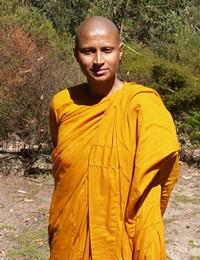An interview with Ven. Bodhicitta by Raymond Lam
 |
| Ven. Bodhicitta |
In March, Buddhistdoor International published an editorial about the era of
simultaneous crisis and opportunity for the Theravada sangha across the traditional Buddhist world. The problems for the sangha, while always influenced by politics, social forces, and shifting economic dynamics, are largely internal: nationalism, sexism (and in some cases institutional gynophobia) and a lack of education form a triple-pronged threat to the Theravada sangha’s moral authority (and for some critics, outright relevance). Yet the other face of crisis is opportunity: In both Asia and the West, watchers and commentators of Buddhism’s story in the globalizing world are noticing several hotspots where events may well reverberate across Asia and influence social justice movements positively.
Take, for example, the recent
establishment of a Buddhist college for nuns in Sri Lanka. Regardless of the politics (and monks are always political in Sri Lanka), it is difficult to disagree that this is a millennial milestone for the country’s Buddhist community, and it is one example of turning the crisis of women’s lack of opportunity to practice into a chance to strengthen and reform the sangha – something that all Buddhists surely agree is a good thing.
One of the nuns bearing witness to these changes is Ven. Bodhicitta, founder of the Nisala Arana in Molkawa. Like many pro-bhikkhuni teachers across the world, Ven. Bodhicitta believes that traditional Buddhist values were never patriarchal, androcentric, misogynistic or sexist to begin with. She therefore does not accept the a
priori fusion of the Buddhist story with the male experience, and like many feminists, seeks to entangle social conditioning from reality. “Most traditional societies have been conservative, but I don’t think this is the issue. The problem in places like Thailand is more to do with an overarching patriarchy,” she says. “Men are seen as leaders and promoted to positions of authority in patriarchal society, whereas women always have to take a second place, a subordinated place, in society.”











